Since March I have edited Letters in Exile with Maria Agureeva. Artillery generously offered Maria and other artists who had fled Ukraine and Russia an important platform from which to express their feelings, voice their grief and protest, and to share stories of courage and compassion.
There are two books I have recalled while editing. In one, by the diplomat and historian George Kennan, he expressed in the 1960s that the two most important issues to be solved in our life time are climate degradation and nuclear proliferation. As we see in Russia and Ukraine, they are inextricably linked with the ongoing state sponsored violence. The other book, The March of Folly by historian Barbara Tuchman, looks at the avoidable but mindless paths to war, ecological catastrophe, and destruction of civilizations, even though the people of those time knew better. It seems to me there is a dominant strain of reactionary violence in collective human behavior that is deeply disturbing.
The words of the Buddhist activist Thich Nhat Hahn helps show me a sane way forward; “To prepare for war, to give millions of men and women the opportunity to practice killing day and night in their hearts, is to plant millions of seeds of violence, anger, frustration and fear that will be passed on for generations to come. We know very well that airplanes, guns and bombs cannot remove wrong perceptions. Only loving speech and compassionate listening can help people correct wrong perceptions. The practice of peace and reconciliation is one of the most vital and artistic of human actions.” —Clayton Campbell, Editor
Maria Agureeva
I want to end Letters in Exile for now with the release of a sixth installment, #NoWar. To all of you who have followed my blog, from my heart I wish to thank you very much; to the long list of everyone who took part in previous blogs, helped my family leave Russia, and especially to the artists who have spoken their truth through Letters in Exile. Because of this unexpected and incredible support, I will be back in Los Angeles soon, and will resume my life there. There were moments I didn’t think this would happen, and now I look forward to how my practice will unfold, informed by my experiences.
I spoke with Digital Art Month’s curator Jess Conatser to highlight artists creating AR and video artwork that inspires peace and stands for #NOWAR in Ukraine. The festival is organized and curated by Elena Zavelev, Andrea Steuer of CADAF & Jess Conatser of Studio As We Are.
For AR please use your phone to access them.
Hermine Bourdin
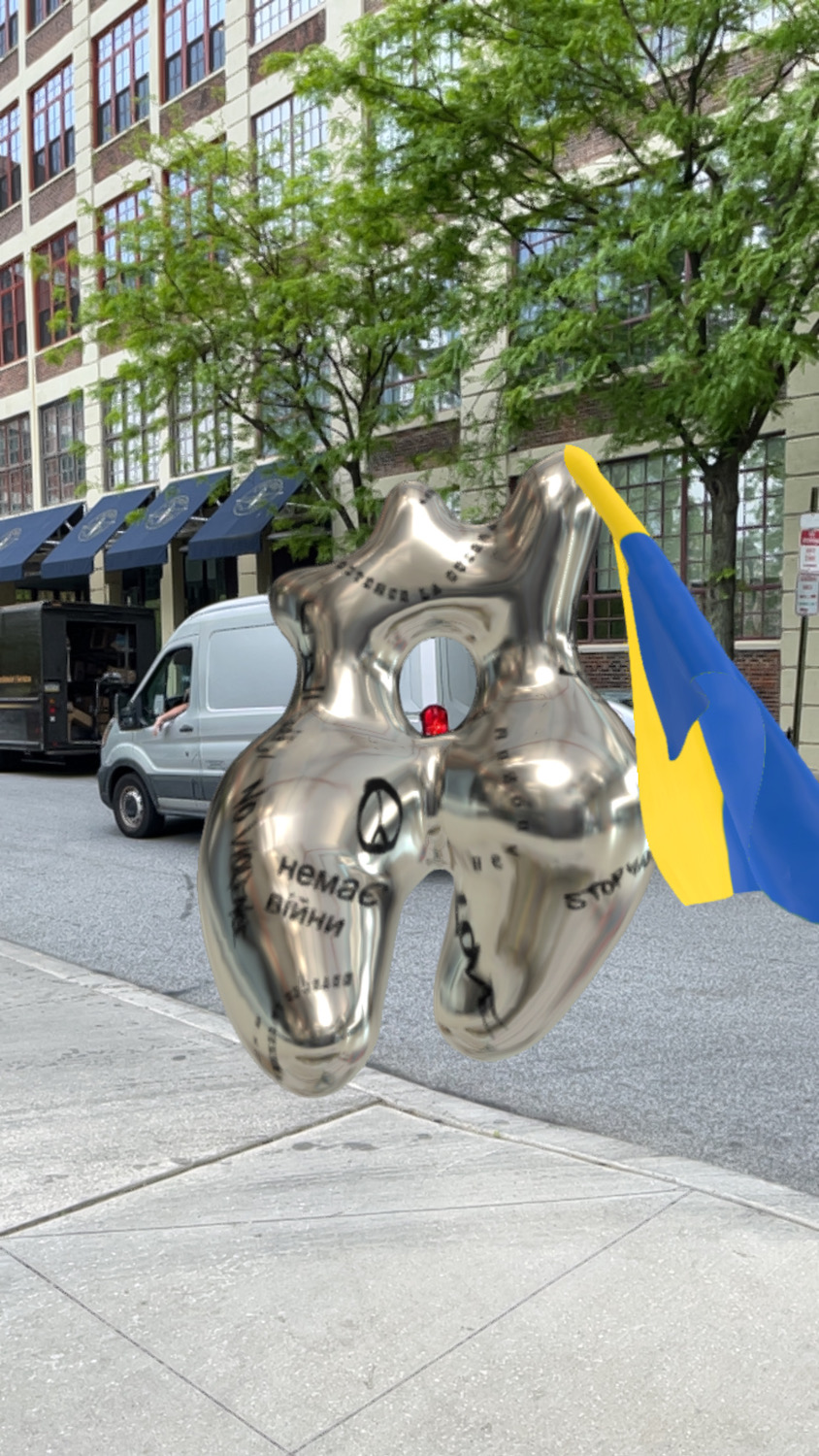
Dance For Peace (Augmented Reality- open on your phone to interact)
https://www.instagram.com/ar/314068410688765/
Dance for peace is the performance of the French dancer Eugenie Drion re-transcribed on one of my sculptures using MOCAP.
Yamid Botina
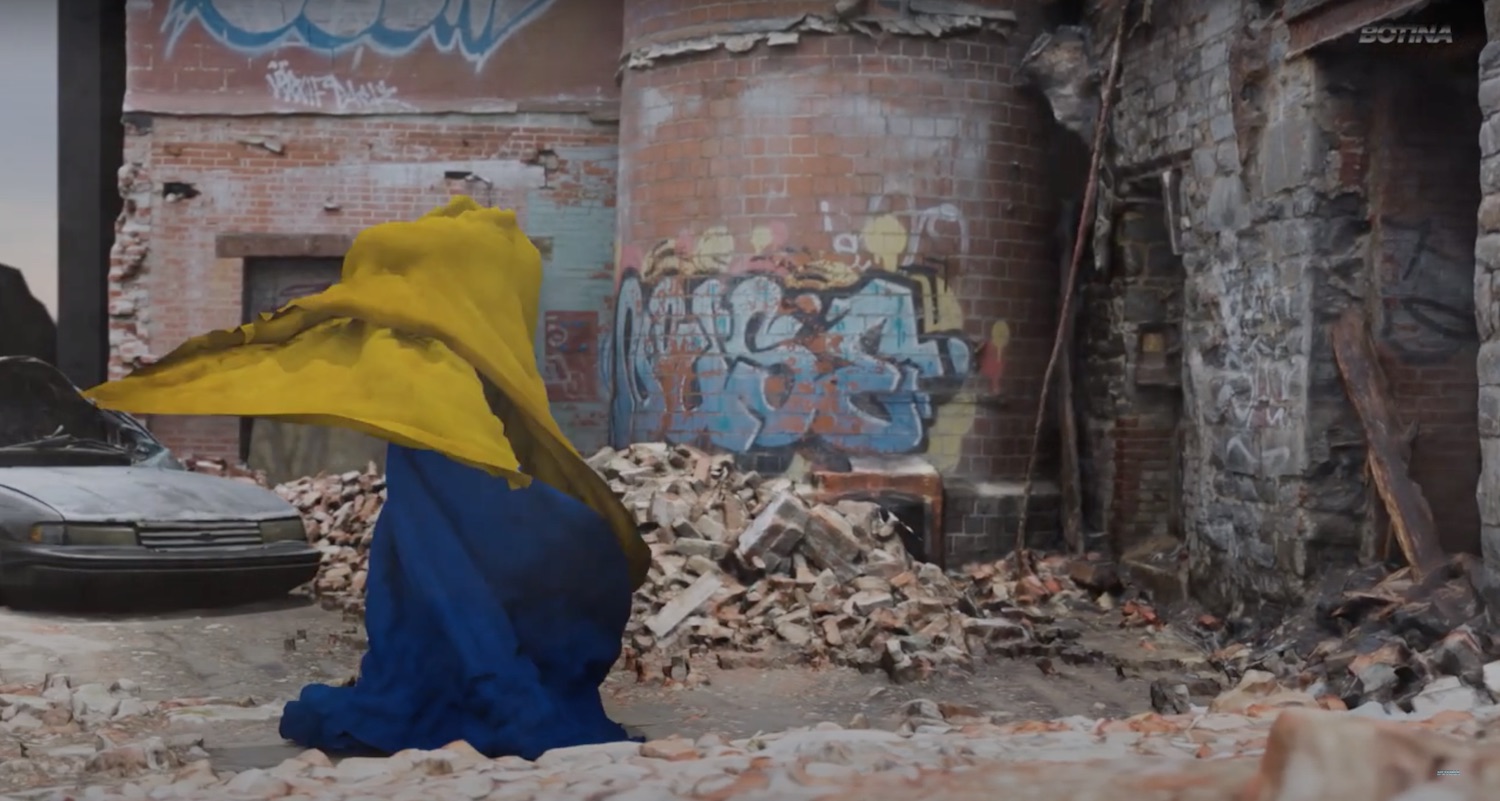
Invisible, Video, 1:01 minutes
https://www.youtube.com/watch?v=cg70rHEVYo4
Botina’s approach to the conflict in Ukraine, based on the things that cannot be destroyed.
Maria Agureeva

The First Universe, Video, 45 seconds, Sound Art Dario Duarte Nunez.
https://www.instagram.com/tv/Cda7_ERAViH/?utm_source=ig_web_copy_link
How quickly we forgot about Love. How often we perceive the heart as only an organ, as a motor that carries through the body, along with blood, gunpowder of war, fear, hatred, confusion and other toxins.
But our hearts are so much more. It is an object that exists simultaneously in billions of universes, where Love resides— the very first of them.
Clayton Campbell
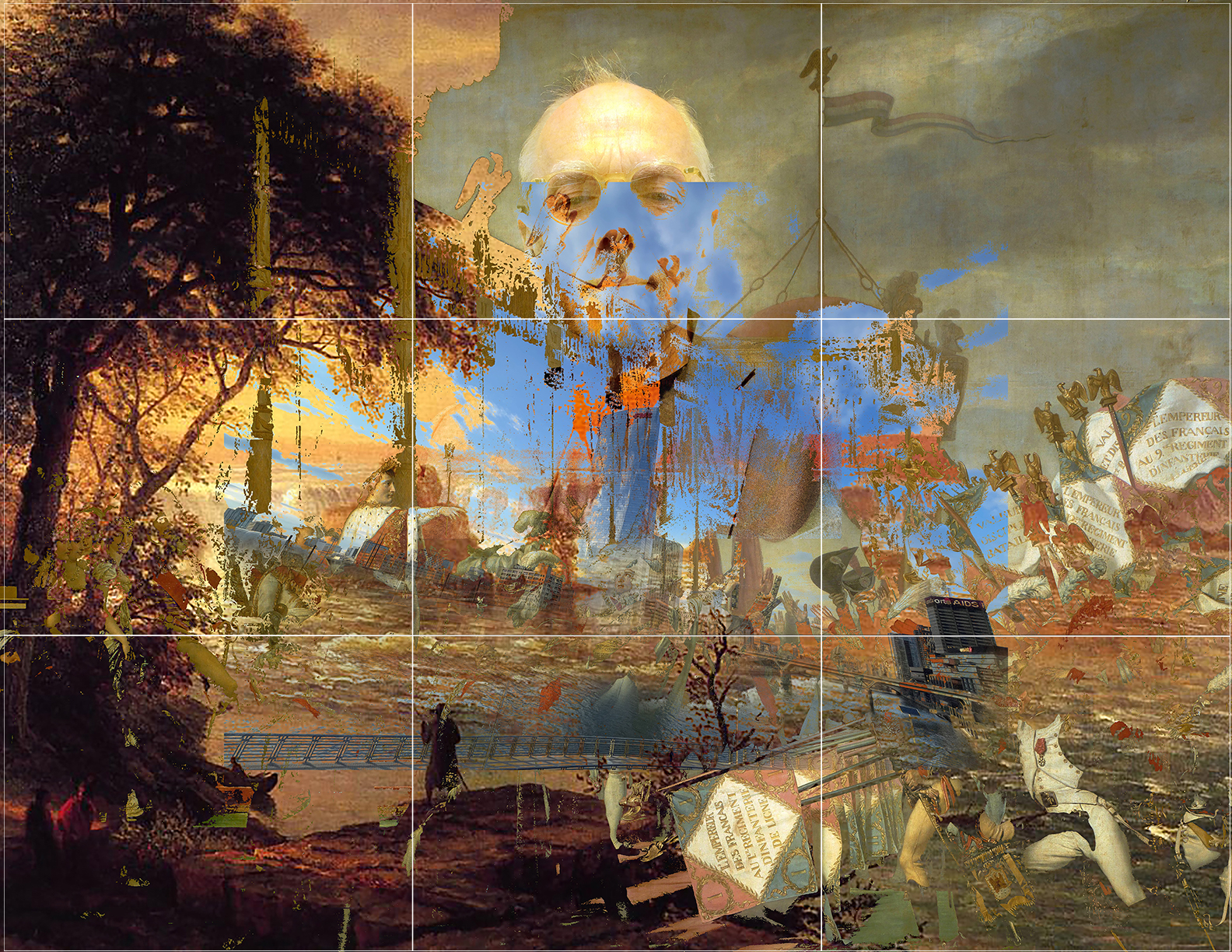
Ghost Ships (photographic print, 2022, 66” x 88”), March 2022
These days a density of fractured images have arrived in my disturbed sleep.
Despairing of the inevitability of Men; their fogs of war, addictive cravings for spilling blood, sexual subjugation, unscripted power stripped of knowledge, wisdom, and compassion,
We travel onward through the dark night of the soul in our Ghost Ships.
Jullian Young
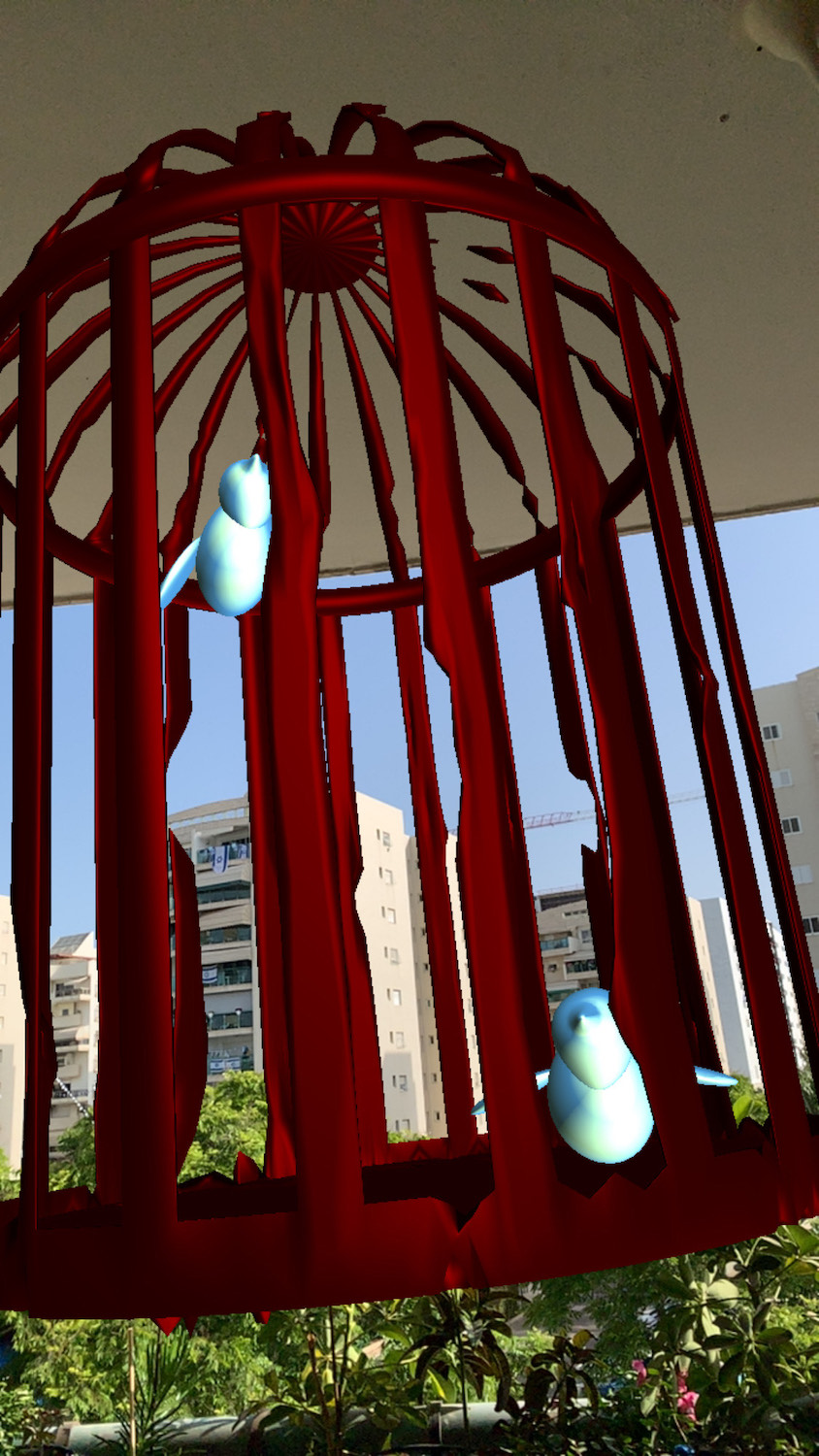
Caged in Red (Augmented Reality- open on your phone to interact)
https://www.instagram.com/ar/5230824633642795/
This artwork places you inside a crumbling red cage surrounded by bluebirds whose yellowish tint is only cast in light
Kushtrim Juniku

No War (Augmented Reality- open on your phone to interact)
https://www.instagram.com/ar/511333743820354/
NO WAR is an AR effect that inspires to speak up against the war in Ukraine .
Zoran Poposki
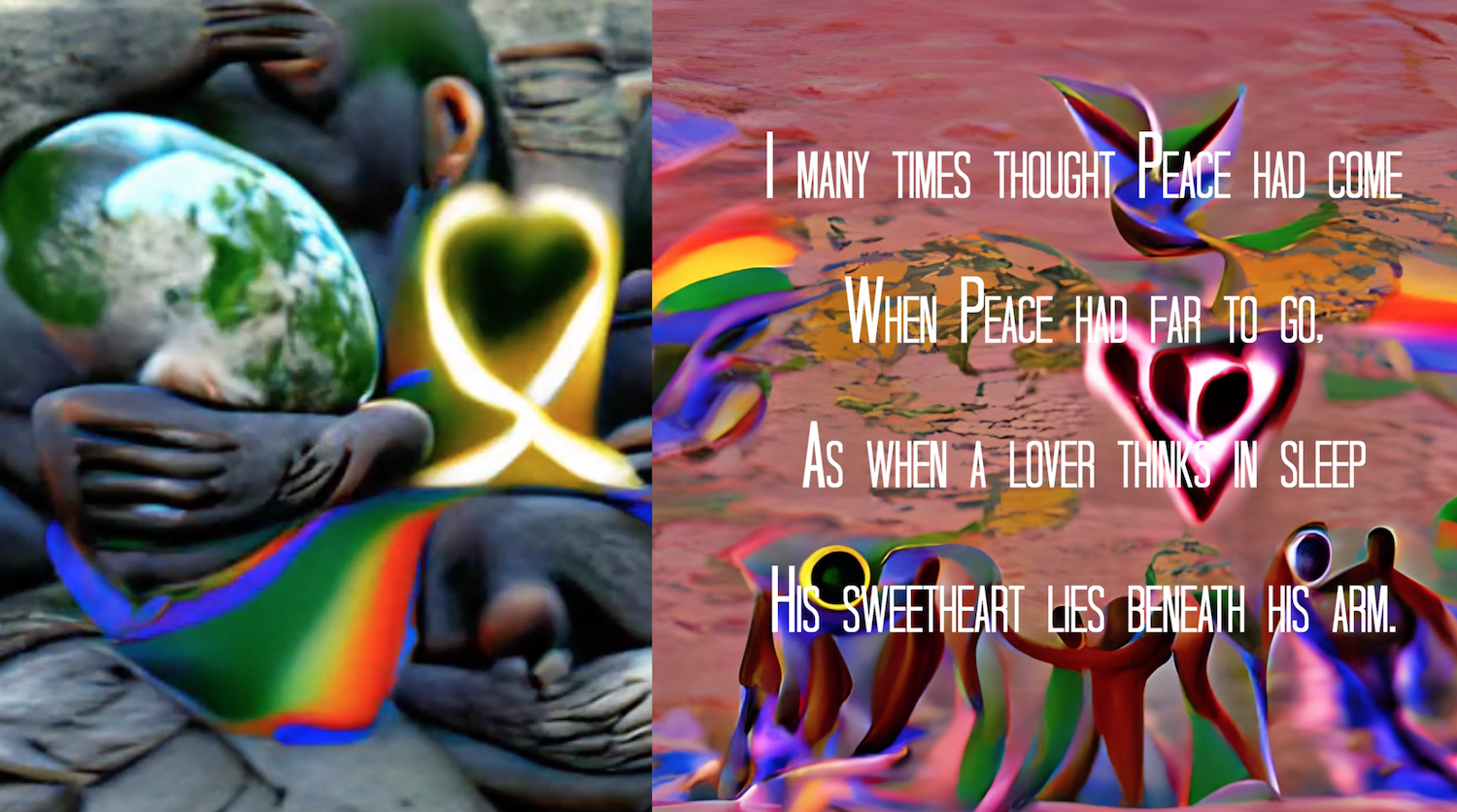
Peace Piece, 2022, animated video generated by AI in collaboration with artist and director Polyptech. 4K video, sound, 1:00 minute
https://vimeo.com/697821931/cbc89c0045
“Peace Piece” is a short animated video generated by artificial intelligence (AI) in collaboration with award-winning contemporary artist and director Polyptech.
The visuals are a series of AI-generated artworks created by Polyptech through text-to-image synthesis utilizing a neural network. The neural network has been trained by Polyptech through thousands of iterations to generate visuals based on a string of keywords associated with peace, such as pacifism, no war, harmony, demilitarization, empathy, love, human rights, social justice, sisterhood, humanity, love, etc.
The lyrics in the video represent an AI-generated poem co-written with Polyptech, based on Emily Dickinson’s reflection upon peace and belonging, “I many times thought Peace had come”. The AI uses a generative text model developed by Open AI, leveraging machine learning and deep learning to achieve the generation of natural language.
The music in the film is a generative sound piece created by an AI music algorithm.
Editor’s Note: If you would like to donate to Ukrainian relief efforts, you may make a direct contribution to the Global Giving Ukrainian Relief Fund at this link. Or please donate to a charity of your choice that will assist the people of Ukraine.
https://www.globalgiving.org/projects/ukraine-crisis-relief-fund/

